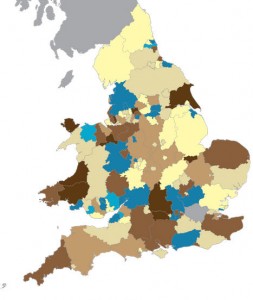Over on his Social Policy blog, Paul Spicker has a brief dissection of the most recent statistical release (January) for the review of Employment and Support Allowance:
“The implication is that we are likely to see over 320,000 successful appeals before this process is finished – about a fifth of all the former claimants of Incapacity Benefit. This will not be the total of wrong decisions, because a proportion of people who have been wrongly excluded will also be denied benefit; it will only be the decisions that have been proven to be wrong, after the DWP and claimants have been forced through an expensive and time-consuming appeal process to set things right. This is a shambles.”
If you need help investigating this further, let us know.
UPDATE: In the comments Paul adds the following:
“While I’m pleased by the widespread circulation of this posting, this was only a quick, back-of-the-envelope calculation, and I cannot hold to it with any degree of confidence. In particular,
* the rate of decision-making has slowed
* the statistical information in the tables does not cover the same time periods, and none of the information is fully up to date
* the level of new appeals seems to be falling
* the success rate seems to be falling, and
* large numbers of appeals appear to be disappearing from the process without explanation.
“That does not undermine the general point, that very large numbers of cases are proving to have been wrongly decided.”




